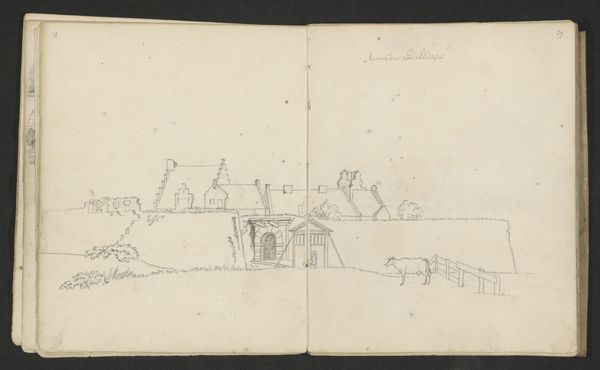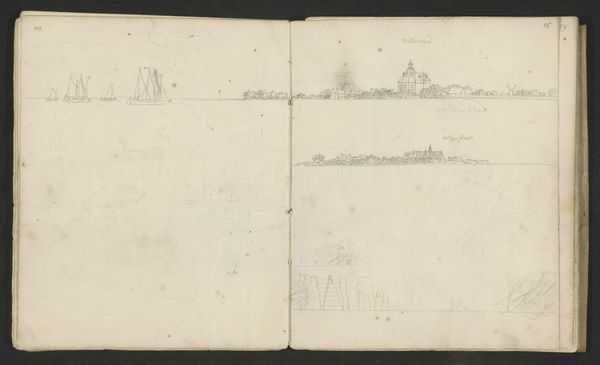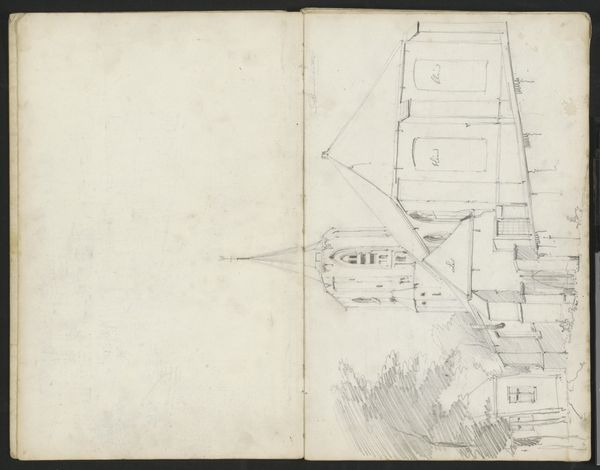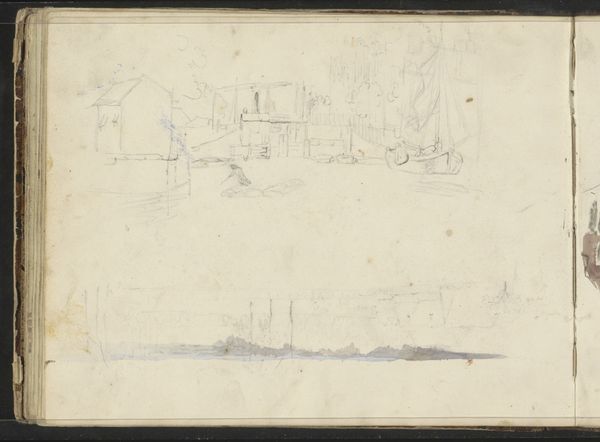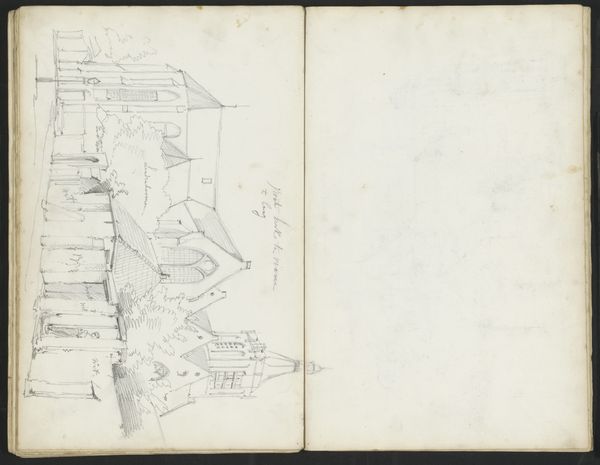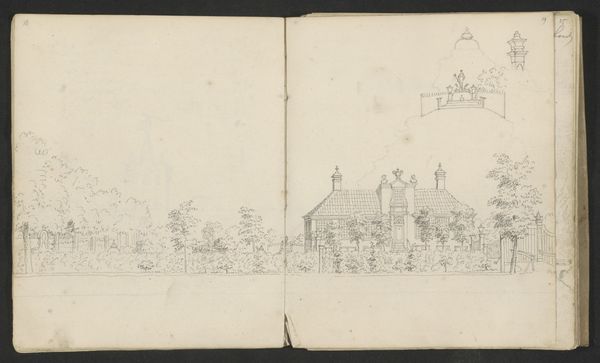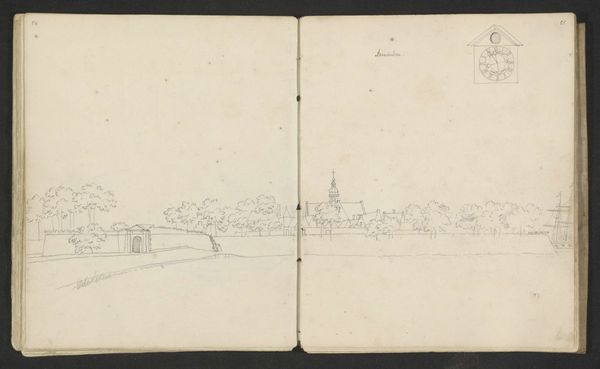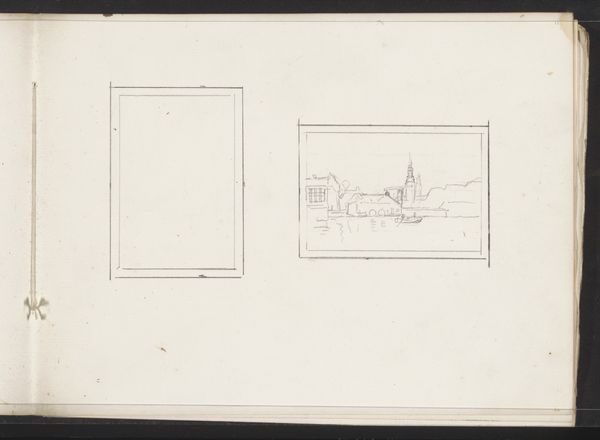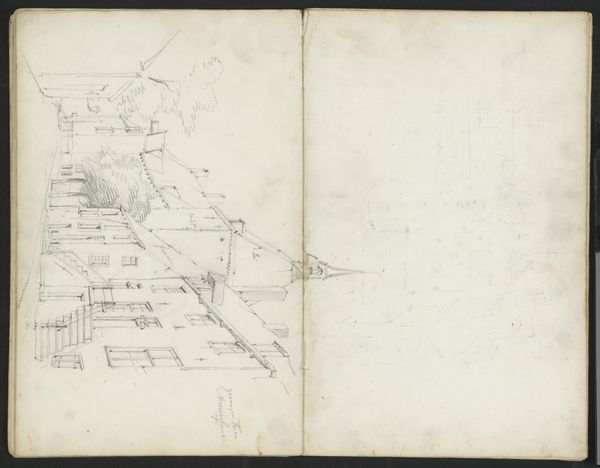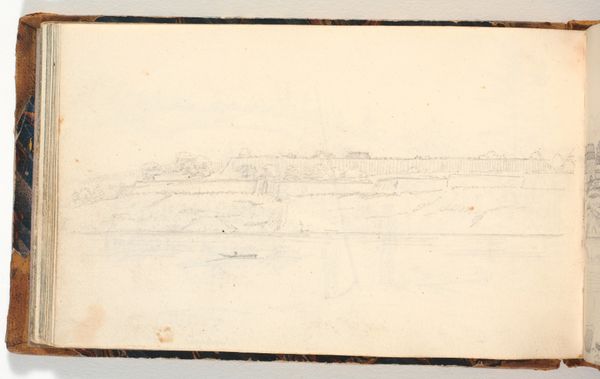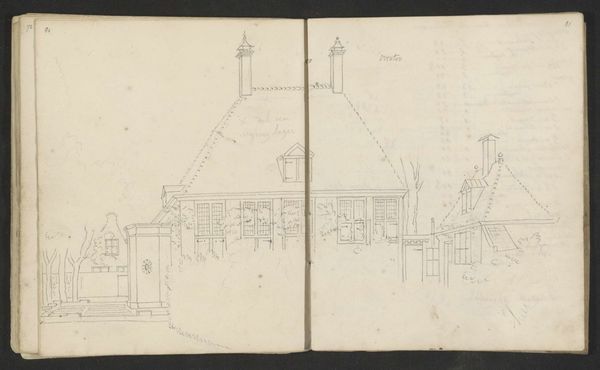
drawing, paper, pencil
#
drawing
#
aged paper
#
dutch-golden-age
#
sketch book
#
incomplete sketchy
#
hand drawn type
#
landscape
#
paper
#
personal sketchbook
#
sketchwork
#
hand-drawn typeface
#
pencil
#
sketchbook drawing
#
genre-painting
#
storyboard and sketchbook work
#
sketchbook art
Copyright: Rijks Museum: Open Domain
Curator: We are looking at a drawing titled "Landschap met een molen en boerderij aan een vaart," or "Landscape with a Mill and Farm on a Canal," by Cornelis Pronk, created around 1728-1732. It’s currently held at the Rijksmuseum. Editor: It has such an ephemeral quality! You see the swiftness of the line work – this really feels like catching a moment. The rawness emphasizes the hand and the quick gestures involved in its making. Curator: Indeed. Pronk employs a deliberate economy of line. Note how he defines form and space through subtle variations in pressure. Look closely at the windmill, how he indicates the structure with very minimal strokes. Editor: And consider the paper itself. You can practically feel the weave of the page, that material foundation beneath the artist’s fleeting impressions. I imagine this sketch existed to create other work; the grind of the mill and farm representing the source and toil, labor, the actual substance. Curator: Precisely. The materiality is interesting—Pronk uses the whiteness of the paper as negative space, making it an integral part of the composition. Notice how he leaves large sections untouched. It draws the eye towards those very light yet descriptive marks that define the farm structures. Editor: And there’s a kind of quiet defiance, isn’t there? An embrace of utility rather than polished finish. Pronk reminds us that art springs from action, and material interactions—that these forms come from someplace and are connected to greater social production. Curator: Absolutely. It reveals Pronk’s ability to synthesize observation and conceptual rigor. Through careful assessment of planes and proportions, the artist doesn't merely depict architecture. He creates a structured viewing experience. Editor: I agree; examining it more closely has moved it past just lines on a page. It is something connected more intrinsically to how labor shaped Dutch society during its Golden Age. Curator: Well, it makes me reconsider how much information an artist can suggest using just a few well-placed marks. Editor: And for me, it stresses how even a preliminary sketch captures a whole story concerning materiality, method, and manufacturing.
Comments
No comments
Be the first to comment and join the conversation on the ultimate creative platform.
